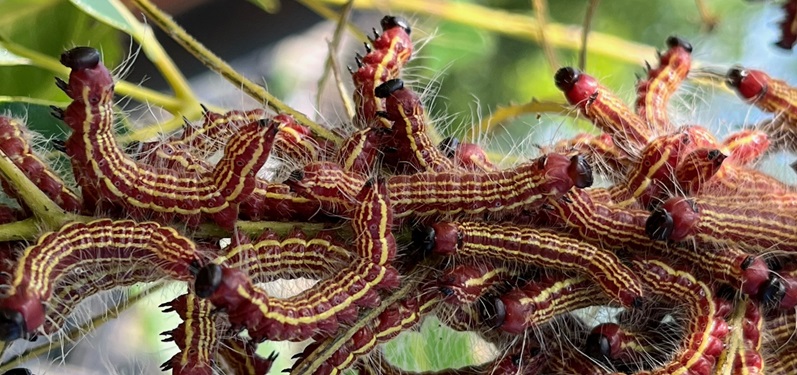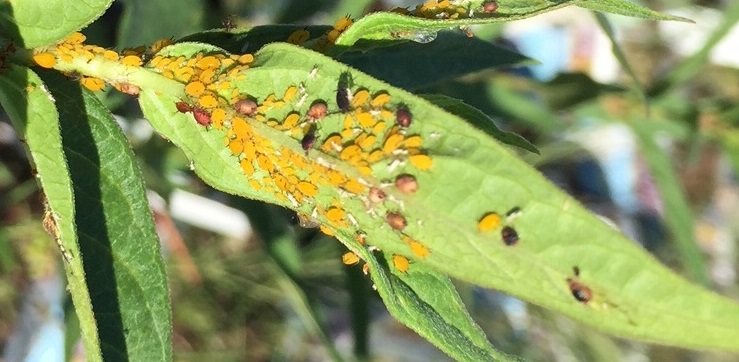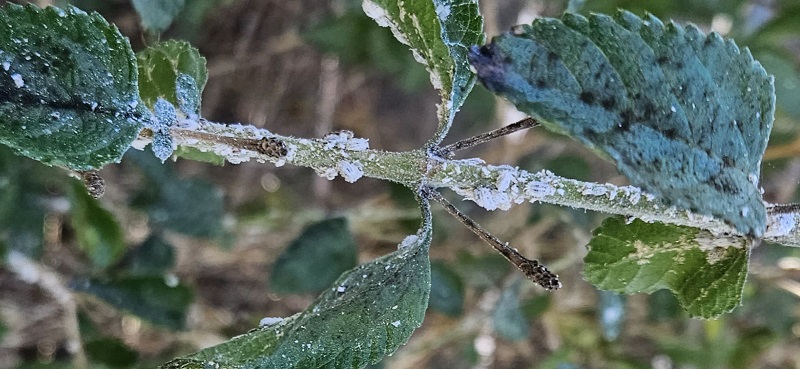It happens every year. Pecan tree leaves just are tasty to many different caterpillars, and it is inevitable that your trees will become dinner to one type of caterpillar or another at some time during the year. So, which one do you have, and how do you control them?
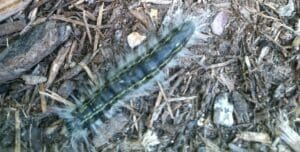 Walnut Caterpillars usually appear in the fall in Central Texas. They are fairly large, up to an inch or longer, are dark colored with lines down their bodies, but the real give-away is they are very fuzzy or actually hairy! They do not make a web, and the first sign is usually a bald spot in your tree. Because they hit in the fall when leaves will begin to fall anyway, they are not often a huge issue for the tree. If you do want to control them, simply wait as they start to mature, and they will begin to move down the trunk, making them easier to spray.
Walnut Caterpillars usually appear in the fall in Central Texas. They are fairly large, up to an inch or longer, are dark colored with lines down their bodies, but the real give-away is they are very fuzzy or actually hairy! They do not make a web, and the first sign is usually a bald spot in your tree. Because they hit in the fall when leaves will begin to fall anyway, they are not often a huge issue for the tree. If you do want to control them, simply wait as they start to mature, and they will begin to move down the trunk, making them easier to spray.

The organic products Bt or Spinosad will control them. They do not sting and are not poisonous, but they are interesting! They will react to a perceived threat by raising their head and tail and wiggling-trying to intimidate a potential predator. Alas, it is all for show!
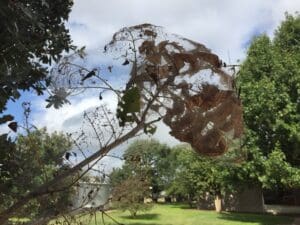 Fall Webworms are known for their large webs on the ends of branches. Heavy infestations can cover entire branches or even the entire tree! They can have four generations in Central Texas, beginning as early as May, although the fall generation is usually the most damaging. The larvae begin to build a silk web as soon as they hatch. They consume the leaves within the web, expanding the web as they feed to cover more leaves. The caterpillars are about one inch long, have pale yellow or greenish bodies with black heads and are covered with tufts of long whitish hairs. The hairs may cause slight skin irritation.
Fall Webworms are known for their large webs on the ends of branches. Heavy infestations can cover entire branches or even the entire tree! They can have four generations in Central Texas, beginning as early as May, although the fall generation is usually the most damaging. The larvae begin to build a silk web as soon as they hatch. They consume the leaves within the web, expanding the web as they feed to cover more leaves. The caterpillars are about one inch long, have pale yellow or greenish bodies with black heads and are covered with tufts of long whitish hairs. The hairs may cause slight skin irritation.
Fall Webworms may be managed on small trees without using chemicals. You can cut the webs off, knock the webs into a trash bag with a stick or pull them down with a rake. If you tear open the web with a stick beneficial insects will help control the populations. Parasitizing wasps may lay eggs in the caterpillars, and other wasps will actually consume them!
Because the caterpillars remain inside the webs to feed, they are protected from the insecticide sprays. For best control with insecticides, spray when the webs and caterpillars are small. Organic insecticides containing Bacillus thuringiensis (Bt) or Spinosad will kill them without harming the beneficial insects. If you can open the webs with a stick or pole saw before spraying, better contact will be possible.
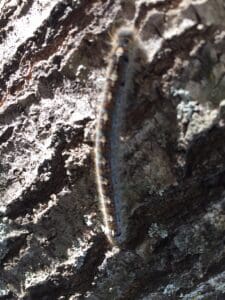
Eastern Tent Caterpillars form a dense silken web, usually in the crotch of a limb, where they will use as a refuge at night and when raining. They leave their “tents” to feed on leaves, returning in the evening for protection. The caterpillars grow to 1-1 ½ inches long, are brightly colored (broken lines of blue, yellow or black) with long hairs on their bodies and a solid white line down the back. They may be controlled by spraying with Bt or Spinosad when they have left their nests and are feeding, or by opening the nests before spraying. There is only one generation of tent caterpillars in Texas per year in the spring, and their feeding should be over by June.

